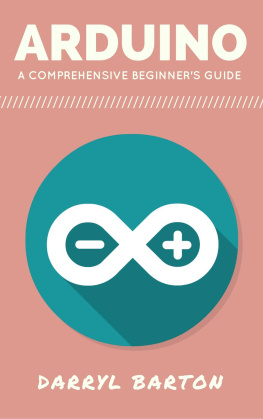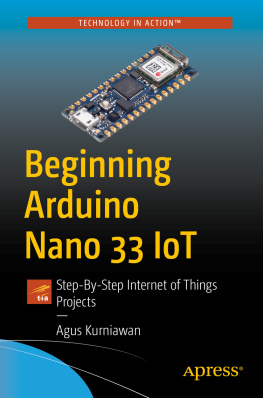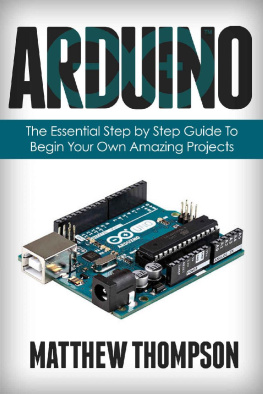Philips - Beginners Guide to Arduino: The Perfect Step by Step Manual or Handbook with Practical examples!
Here you can read online Philips - Beginners Guide to Arduino: The Perfect Step by Step Manual or Handbook with Practical examples! full text of the book (entire story) in english for free. Download pdf and epub, get meaning, cover and reviews about this ebook. year: 2020, genre: Home and family. Description of the work, (preface) as well as reviews are available. Best literature library LitArk.com created for fans of good reading and offers a wide selection of genres:
Romance novel
Science fiction
Adventure
Detective
Science
History
Home and family
Prose
Art
Politics
Computer
Non-fiction
Religion
Business
Children
Humor
Choose a favorite category and find really read worthwhile books. Enjoy immersion in the world of imagination, feel the emotions of the characters or learn something new for yourself, make an fascinating discovery.

- Book:Beginners Guide to Arduino: The Perfect Step by Step Manual or Handbook with Practical examples!
- Author:
- Genre:
- Year:2020
- Rating:4 / 5
- Favourites:Add to favourites
- Your mark:
- 80
- 1
- 2
- 3
- 4
- 5
Beginners Guide to Arduino: The Perfect Step by Step Manual or Handbook with Practical examples!: summary, description and annotation
We offer to read an annotation, description, summary or preface (depends on what the author of the book "Beginners Guide to Arduino: The Perfect Step by Step Manual or Handbook with Practical examples!" wrote himself). If you haven't found the necessary information about the book — write in the comments, we will try to find it.
Philips: author's other books
Who wrote Beginners Guide to Arduino: The Perfect Step by Step Manual or Handbook with Practical examples!? Find out the surname, the name of the author of the book and a list of all author's works by series.
Beginners Guide to Arduino: The Perfect Step by Step Manual or Handbook with Practical examples! — read online for free the complete book (whole text) full work
Below is the text of the book, divided by pages. System saving the place of the last page read, allows you to conveniently read the book "Beginners Guide to Arduino: The Perfect Step by Step Manual or Handbook with Practical examples!" online for free, without having to search again every time where you left off. Put a bookmark, and you can go to the page where you finished reading at any time.
Font size:
Interval:
Bookmark:

- Arduino Uno
- Arduino Leonardo
- Arduino Due
- Arduino Yn
- Arduino Tre
- Arduino Micro
- Arduino Robot
- Arduino Esplora
- Arduino Mega
- Arduino Mini
- LilyPad Arduino
- Arduino Nano
- Arduino Fio
- Arduino Pro
- Arduino Ethernet
- Setup ()
- Loop ()
- pinMode - Sets the pin mode to either INPUT or OUTPUT.
- analogRead- The analog voltage is read from the analog input terminal.
- analogWrite - Writes an analog voltage to an analog output terminal.
- digitalRead - reads the value of the digital input pin.
- digitalWrite - sets the value of the digital output terminal to either HIGH or LOW.
- Serial.print - prints the data to the serial port as human-readable ASCII text.
- GPS library
- LCD library
- Servo library
- SD library
- Robot_control library
- Robot_motor library
- Ethernet library
- Wi-Fi library
- Stepper library
- SPI library
- EEPROM library
- Software Serial library
- GSM library
- First, install the IDE. You can download the IDE from the Arduino website.
- Install the program on your computer.
- Now run the arduino IDE.exe file. It has the following layout:
- Write your program using the code editor and upload it to the Arduino. To do this, you need to connect the Arduino to your computer using a USB cable.
- In the IDE, select the type of Arduino you are using from Tools -> Boards menu.
- Now verify your code by clicking on the "hash" icon at the top of the IDE window, then click the "right" arrow next to compile the code and upload it to the Arduino.
- GSM Shield
- Ethernet Shield
- WiFi Shield
- Motor Shield
- Proto Shield
- Joystick Shield
- Bluetooth Shield
- Xbee shield
- Breadboard
- USB cable
- 9V Battery
- LEDs
- Push Buttons
- Capacitors
- Voltage Regulators
- Sensors (IR, temperature etc)
- Jumper wires
- Resistors
- Potentiometer
- Motors (DC, Servo, BLDC)
- LCD
- Hex keypad
- Arduino shields
Font size:
Interval:
Bookmark:
Similar books «Beginners Guide to Arduino: The Perfect Step by Step Manual or Handbook with Practical examples!»
Look at similar books to Beginners Guide to Arduino: The Perfect Step by Step Manual or Handbook with Practical examples!. We have selected literature similar in name and meaning in the hope of providing readers with more options to find new, interesting, not yet read works.
Discussion, reviews of the book Beginners Guide to Arduino: The Perfect Step by Step Manual or Handbook with Practical examples! and just readers' own opinions. Leave your comments, write what you think about the work, its meaning or the main characters. Specify what exactly you liked and what you didn't like, and why you think so.







